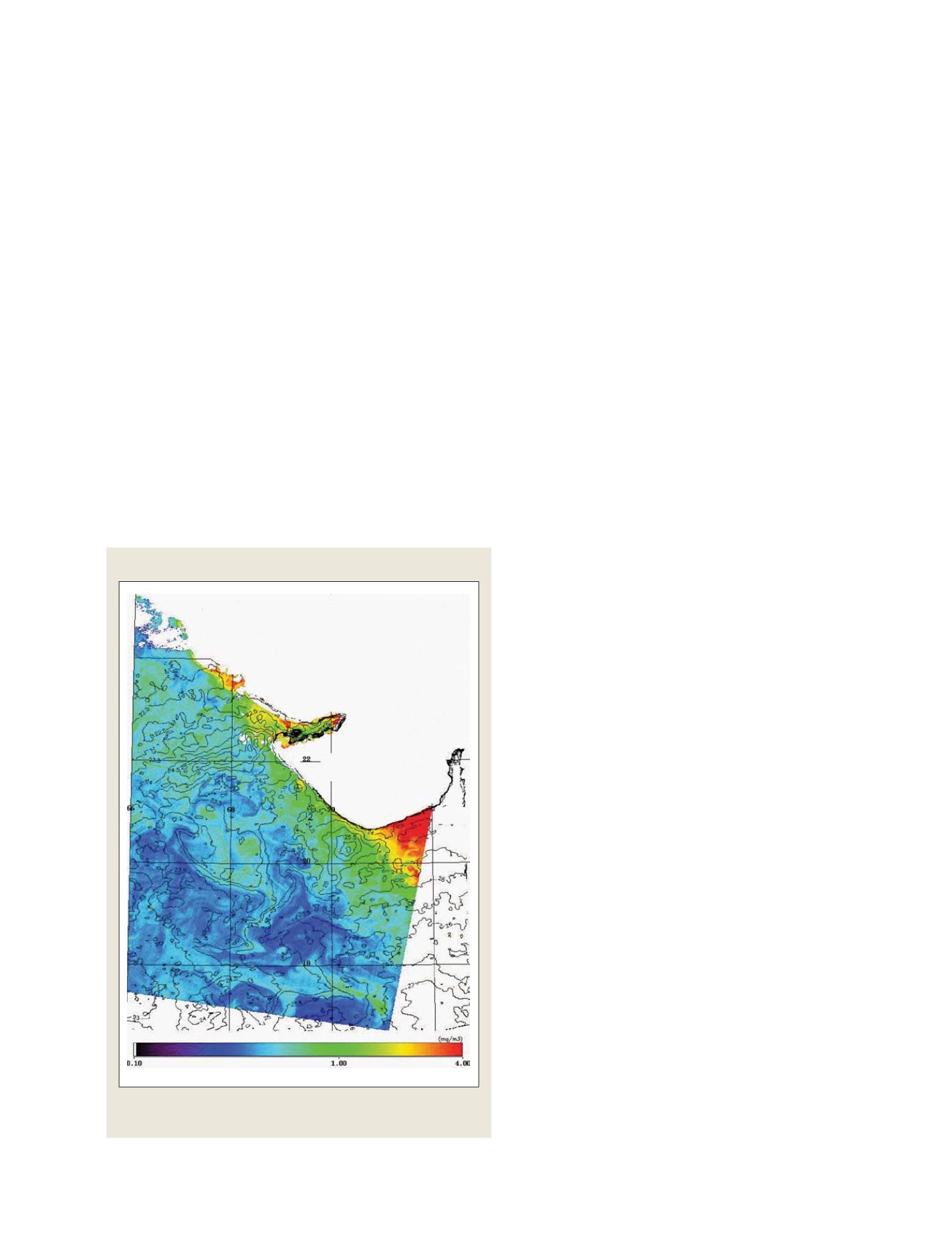

[
] 257
fuel per vessel was USD1, 5000.
8
The catch-per-unit-effort
(CPUE) increased by a minimum of 70 per cent.
9
The results also demonstrated that commercially impor-
tant species are more abundant in PFZ areas compared to
non-PFZ areas.
Awareness campaigns
To create awareness and to educate the fishermen on the
latest technologies used to make up the advisories,
several PFZ awareness and user interaction workshops
have been conducted. Sixty-six user interaction work-
shops and awareness campaigns with the fishing
community and state fishery officials were held during
2006-07.
Three short films of fifteen minutes duration have
been made on PFZ and telecasted on the Nayi Disha
programme, Doordarshan, Delhi (DD-1). The PFZ films
have been translated into all coastal languages and have
been used during the awareness campaigns. This effort
increased the number of active PFZ receiving nodes from
100 to 200, which in turn suggests increased PFZ use.
Socio-economic benefits
There was a great deal of pressure on the well-known
fishing grounds and it is this which lead to the decline
in CPUE. PFZ methods help to direct fishing to new
areas and stimulate better returns. The benefit to cost
ratio increased from 1.3 to 2.1 for those who used the
PFZ information.
9
It has been estimated that ten per cent of boat
owners, of which there are approximately 10,000, used
PFZ advisories in 2002. This is predicted to increase
by at least 25 per cent in the next few years. Annual
savings equate to about USD130 million (Rs.545
crores) for those adopting ten per cent utilization and
USD390 million (Rs.1635 crores) for those adopting
25 per cent utilization.
10
Currently about 27 per cent
boat of owners are using the PFZ forecast.
Future plans
Wind monitoring from the QuikSCAT satellite will
further help to increase the validity period of PFZs from
three to five days,
11
by improving understanding
regarding currents. The improved methodology is
expected to enhance the success rate by up to 85 per
cent, as observed during the experimental phase. In the
near future, the PFZ forecast will also harness informa-
tion on sea state, tide, currents and winds which will
help fishermen to reach the PFZ site safely and in the
shortest time.
A fish species-specific forecast based on individual
species’ food habits and environmental conditions is also
planned. This would allow fishermen to select the most
suitable vessel, gear and fishing technology in advance.
The other major improvement is likely to be in provid-
ing location-based services. Experiments are underway
to provide forecasts straight to fishing vessels through
satellite ratio.
measurement units are disseminated three times a week through
various modes. The total number of users is about 27,000, which is
27 per cent of boat owners.
This web-based multilingual on-line information delivery system
with web-GIS capability enables users to query, analyze, visualize, and
download a wide range of ocean data, information and advisories
pertaining to any area in the Indian EEZ.
Validation of PFZ advisories
A continuous validation of forecasts was undertaken along the Indian
coast. A concurrent and quantitative feedback on the total catch
(species-wise) obtained in the notified and non-notified PFZ from the
fishing boats operating in the region was attained. The following deduc-
tions were made.
PFZ advisories were found to be most beneficial to motorised and
small mechanised sector fishermen engaged in pelagic fishing activities
such as ring seining and gill netting. The advisories helped to reduce
the search time, which in turn resulted in the conservation of valuable
fuel oil and human effort.
Forecast reliability was found to be 70 to 80 per cent, with the reduc-
tion in search time found to be 30 to 70 per cent. The saving in cost of
Chlorophyll map
Colour-coded chlorophyll map with SST contours overlaid. The coincident
fronts indicated by SST and chlorophyll gradients are selected as PFZs
S
OCIETAL
B
ENEFIT
A
REAS
– A
GRICULTURE
















